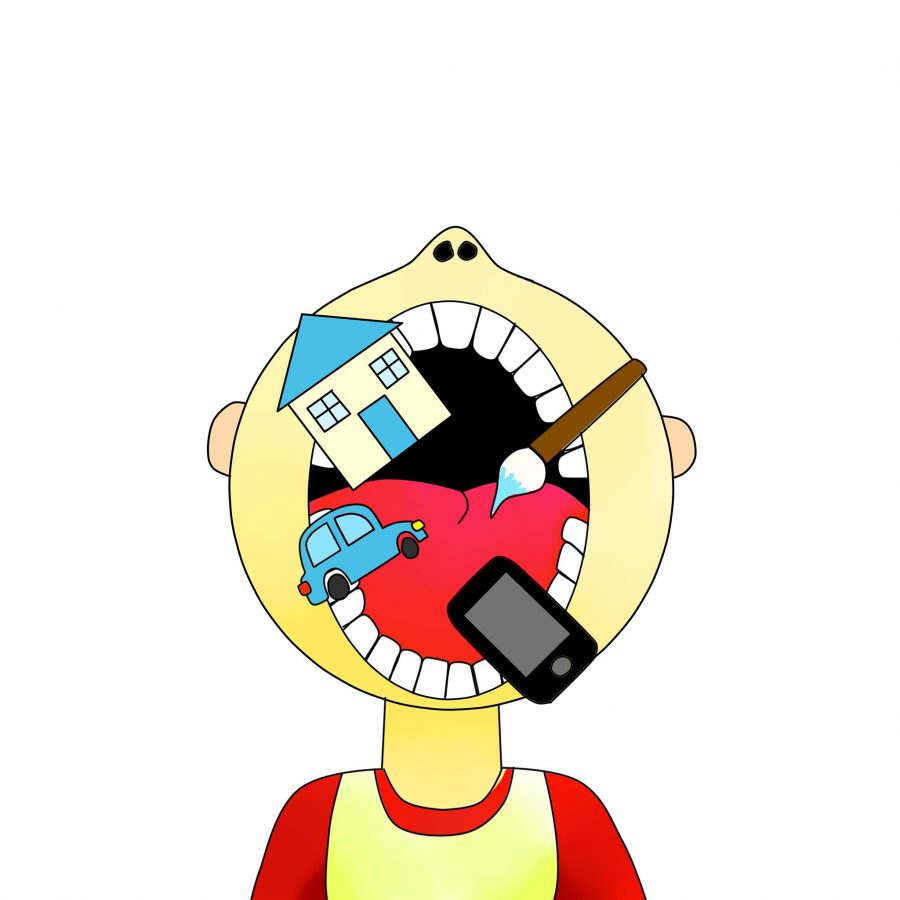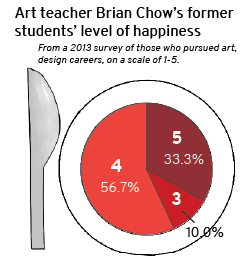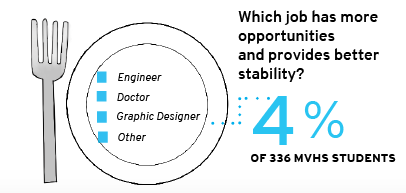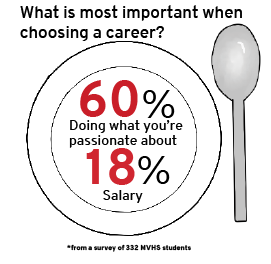he “starving artist” is a person who chooses a life of poverty in order to fully devote themselves to their art-related ambitions. Vincent Van Gogh, for example, managed to sell only one painting during his lifetime — to his older brother. And now, Van Gogh is one of today’s most revered artists.
This notion of immersing oneself into art and completely disregarding money was romanticized in the 18th century. And because of this, the perception has remained relatively unaltered even though times have changed.
Class of 2006 alumnus Tiffany Jon knew since elementary school that she wanted to pursue a career related to art and design. But back in high school, she was only aware of the fine art industry and pictured herself being a painter or an illustrator. Now, she is a designer.
After graduating high school, Jon attended Rhode Island School of Design. Following her schooling, she returned to California and worked a couple of jobs before attaining her current job as a human interface designer at Apple. Jon designs the interface and experience for the iOS, Mac OS and watchOS and has worked on many Apple products like the iPhone and Apple Watch.
Jon strongly believes that the “starving artist” is a myth and asserts that the stigma that surrounds the myth mainly exists because people associated the word artist with starving during the 19th century.
“I would say that there are more opportunities in [art and design] than are there for people in STEM,” Jon said. “I feel like people are slowly starting to see that. People don’t realize who designs your furniture, the culinary tools you use, the homes you live in or the cars you drive.”
Art teacher Brian Chow believes that because of the open-endedness that accompanies the world of art and design, there is an abundance of opportunities for a student seeking a career in art.
“The idea of being an artist or designer is a little fragmented, and that is why people don’t understand it,” Chow said. “People think that if you are good at art, you have to draw or paint. Art and design are very blurry to the point where people are doing lots of different things.”
Although competition is prevalent in the art industry as well as in many other industries, it can be overcome. Chow, for example, believes that if one chooses to be a graphic designer, there are a lot of people who wish to pursue a similar career. However, the more specialized and well groomed a person’s skill set is, the easier it is to stand out. Specialization is the key to overcoming the unavoidable competition.
“There is somebody that I have met that works at Levi’s and her job is to pick colors. She picks the color of a sweater for a particular season, and she gets paid to do this,” Chow said. “She makes enough money to live in San Francisco, [so] she’s not starving.”
Salary is one of the many factors that job applicants consider when determining whether or not they are going to accept a job offer. The Social Security Administration reports that the average annual wage is $46,481. The U.S. Bureau of Labor statistics states that the annual median salary for multimedia artists and animators is $63,630 and annual median salary for a web designer, for example, is $63,490.
Senior Anna Hsiao grew up in an environment in which art was a major influence as her mother is an avid artist. And knowing that she did not want to study finance, science or math for four years after high school, she decided in her sophomore year that she wanted to pursue a career in art.
“There are so many things you can do with art. You can go into developing video games, animation, graphic design or even traditional art,” Hsiao said. “There are a lot more pathways for artists nowadays.”
She believes that while pursuing what one is passionate about may not be realistic for everyone, it is attainable for her. The support from her family along with financial stability allows her to pursue her genuine interests. Hsiao also says that she would rather be unemployed in an occupation that she loves than be succeeding in a subject that she is not very passionate about.
“[In art], you have to be extremely self-motivated,” Hsiao said. “It’s very scary for a lot of people because it requires a lot of hard work and really good time management.”
Although an acute perception of the “starving artist” may not exist in the society we live in today, senior Shikhar Tyagi believes that the “starving artist” can have a positive connotation. He aspires to become a product designer and looks forward to pursuing it as a career — his dream being to see a product that he designed in someone’s hands.
“[The idea] does exist, but not in a bad way,” Tyagi said. “A ‘starving artist’ should never be taking the situation negatively and instead should be more of an opportunist .”
Chow asserts that the concept of the “starving artist” is a 19th century notion that has bled into the 21st century and it is because of the mindset not being altered. He believes that like any other career, a profession in art holds many opportunities and if one is truly passionate about it, then the opportunities that they have to embrace are plentiful.
“It’s not like everyone should be an artist,” Chow said. “If that’s what what you want to do, then I [would] encourage [students to pursue it].”












